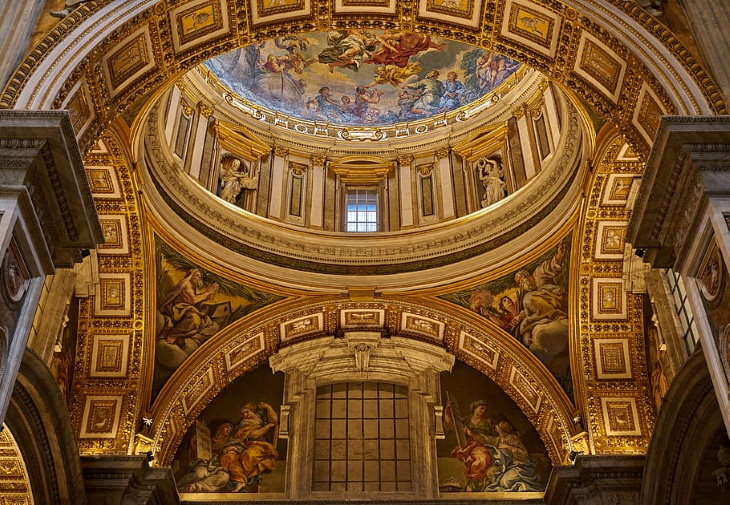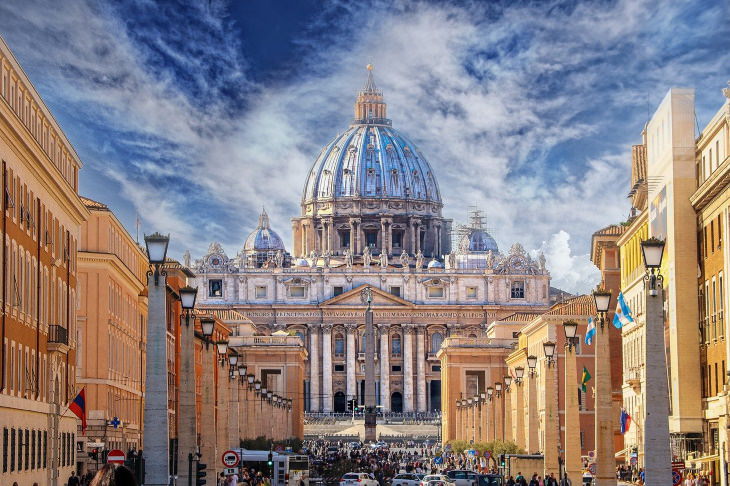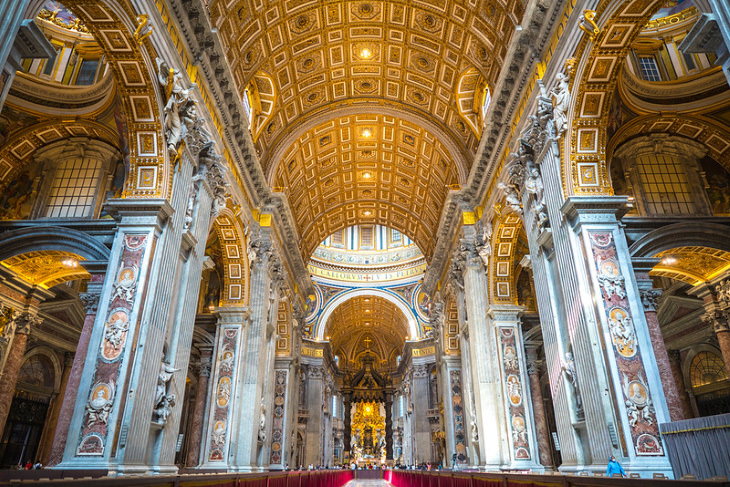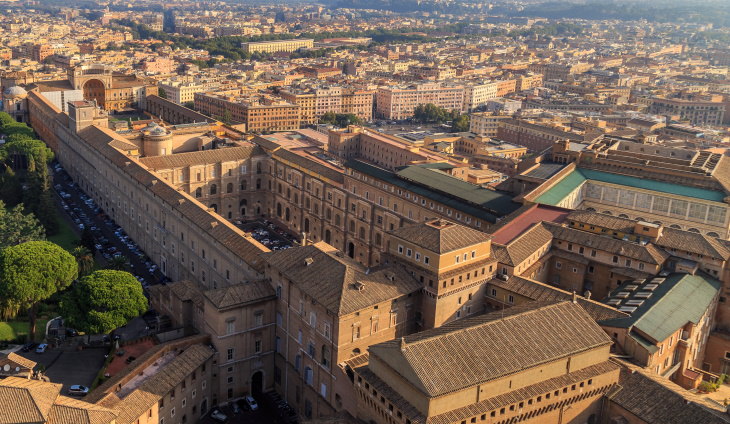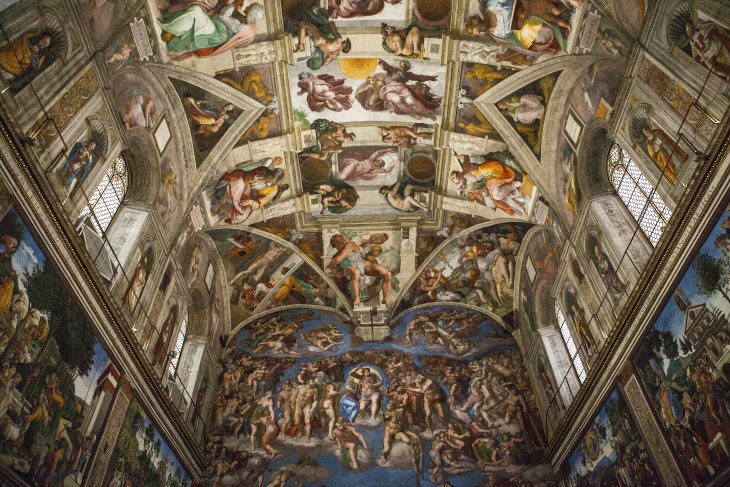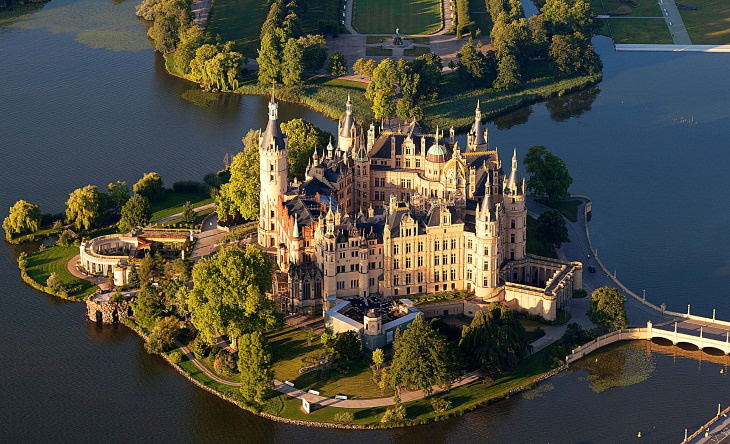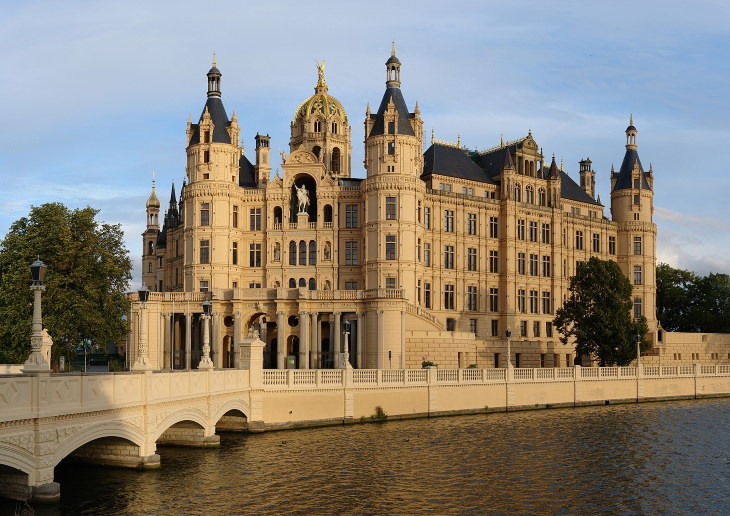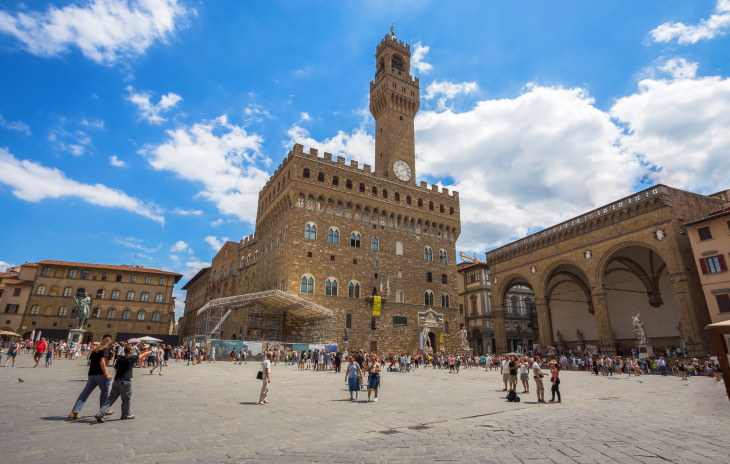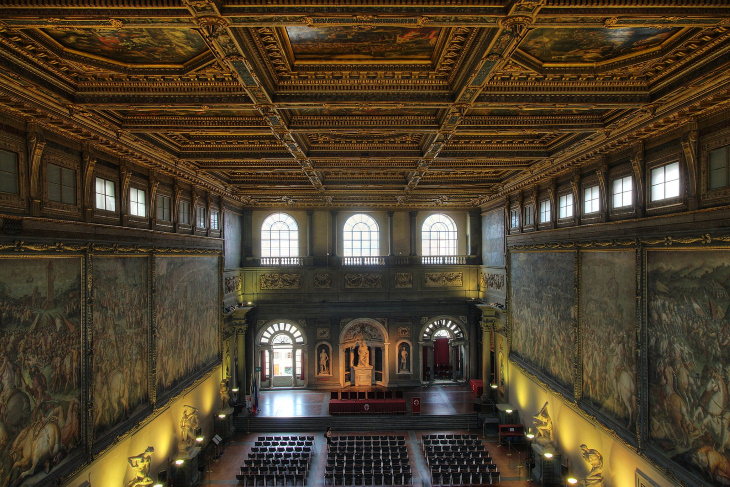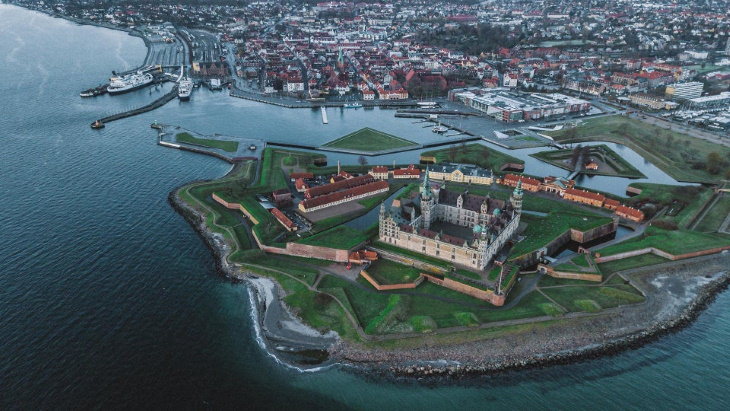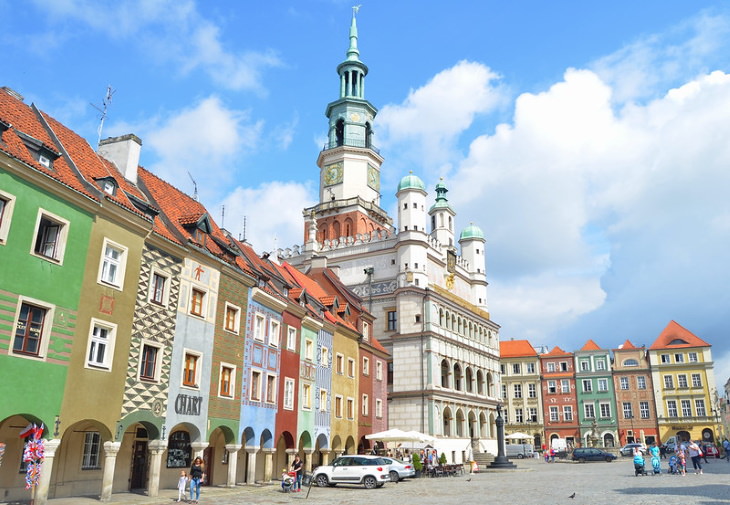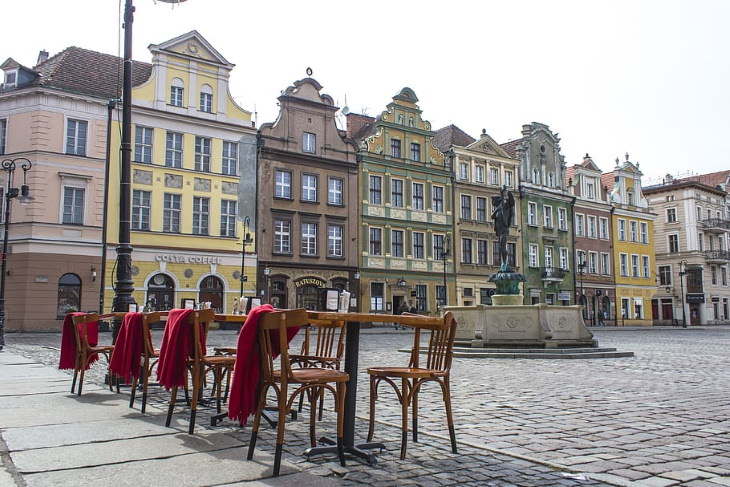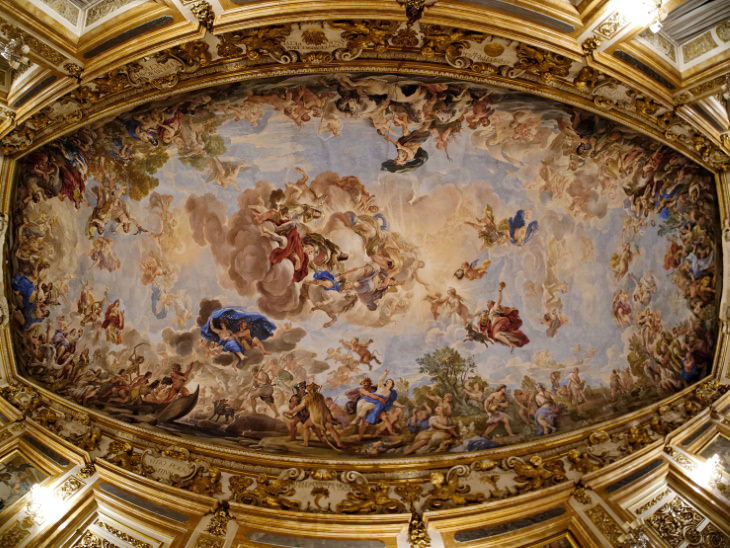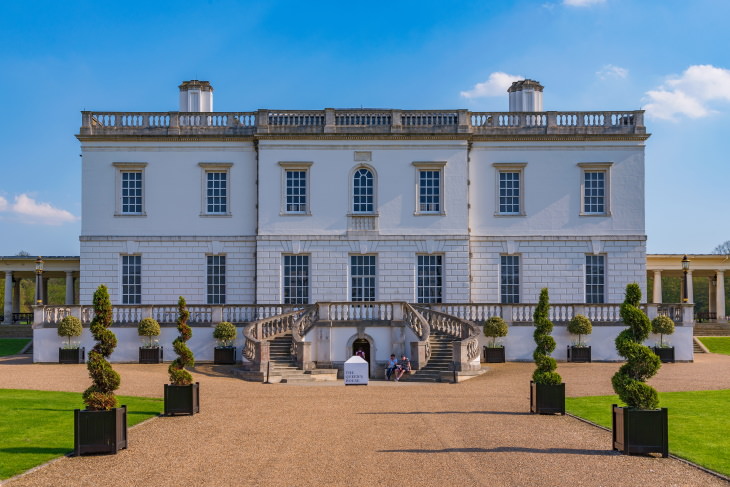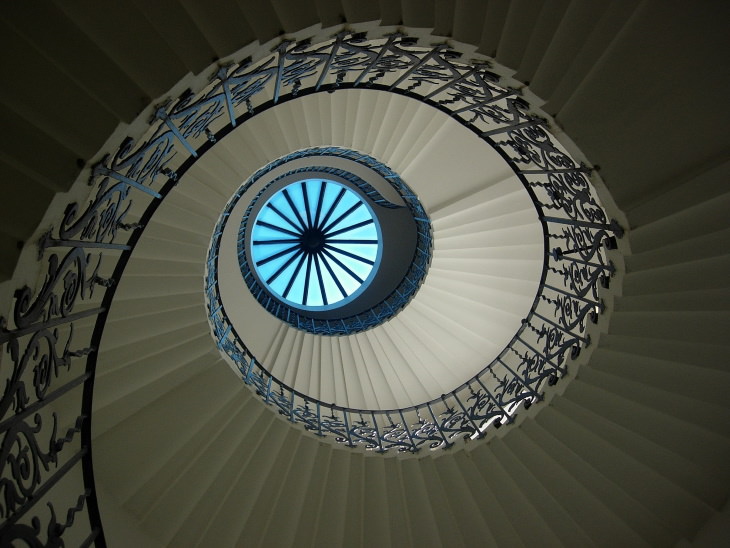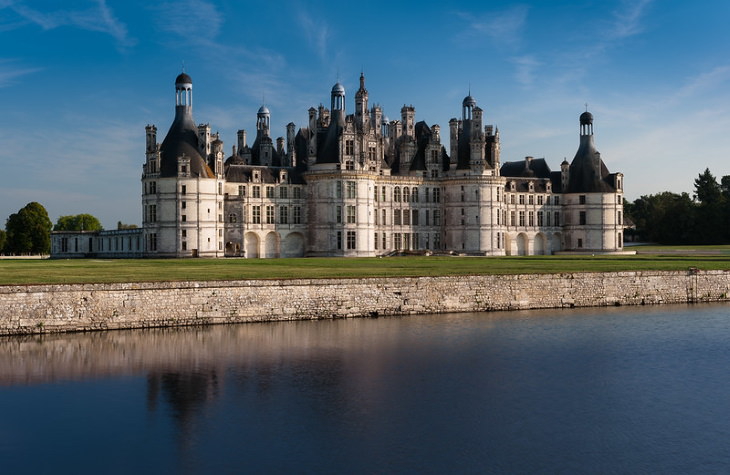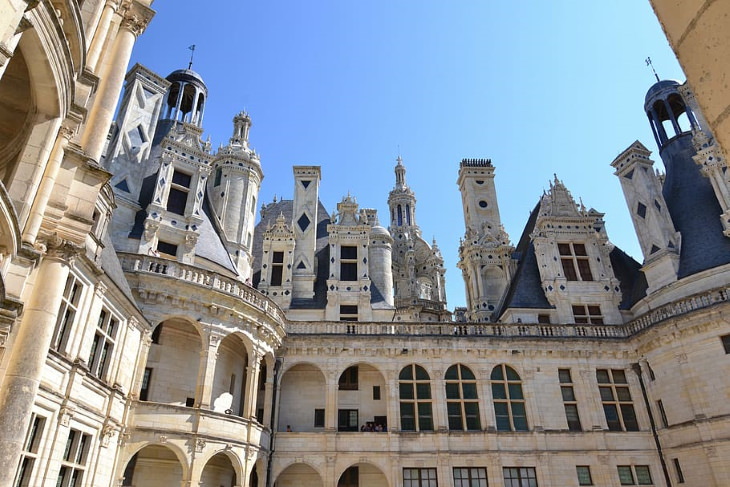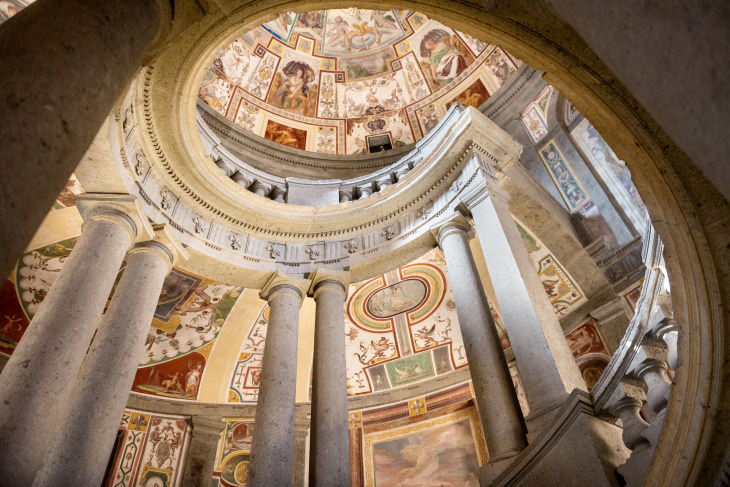The Interior of St. Peter's Basilica
The Renaissance was the era when European artists rediscovered the beauty of Ancient Greek and Roman art. Inspired by the natural but idealistic depictions they saw in antique sculpture and architecture, Renaissance artists and architects focused on the idea of geometric forms, symmetry, and proportion.
Imitating the works of great Greek and Roman architects, Renaissance-era structures often feature simple geometrical shapes - rectangles, domes, spirals, rows of columns, and arcades - that were in stark contrast with the irregular shapes of Gothic buildings. Among the key elements of Renaissance architecture are the orderly arrangement of columns, the wide use of domes, niches, and arches. The abundance of interior decorations like frescos, sculptures, and paintings that depict humans in natural forms is another prominent feature.
As you look through the pictures of the following 10 buildings, try to spot all of these key characteristics yourself.
1. St. Peter’s Basilica - Vatican City
St. Peter’s Basilica is arguably the most famous Christian church of all. This beautiful structure is one of the best-preserved and most opulent examples of Renaissance architecture, even though it does have some Baroque style elements as well. Construction of St. Peter’s Basilica started in 1506 and lasted for over a century until 1626.
The church was designed by such famed architects and artists as Gian Lorenzo Bernini, Donato Bramante, and Carlo Maderno. The famous dome of the building was designed by Michelangelo himself, and it remains the tallest dome in the world to this day. Inside the basilica, visitors will find some of the greatest examples of Renaissance sculpture, such as Michelangelo’s Pieta.
2. The Sistine Chapel - Vatican City
The famous chapel is located in Vatican City too, and namely in the Apostolic Palace. The chapel was built between 1477 and 1480 on behalf of Pope Sixtus IV for whom it was also named. With its narrow rectangular form and tall ceilings, some may point out that the building that houses the famous Sistine Chapel is rather plain. But we would argue that its simplicity is also a virtue, as its main task is to act as the backdrop of the most famous frescoes in the world.
As many of you will already know, the Sistine Chapel holds the iconic Renaissance frescoes of Michelangelo, including The Creation of Adam.
3. Schwerin Palace - Schwerin, Germany
The stunning Schwerin castle is built on an island found in the middle of a lake that bears the same name. Initially, the building was constructed as a Medieval fort in 1160, but it was transformed into a palace by John Albert I, the Duke of Mecklenburg, in the 16th century. Several beautiful bastions were added to the building by Italian masters during the construction of the Renaissance palace, and they stand to this day.
But this wasn't the last time the building faced changes. The palace we see today was designed by Georg Adolph Demmler, who had conducted the final renovation of the castle in the 19th century inspired by the French Renaissance style.
4. Palazzo Vecchio - Florence, Italy
The Italian city of Florence is often referred to as the cradle of the Renaissance. Under the rule of the powerful Medici family during the 15th-18th centuries, the rich city attracted talented artists and creatives from the entire country, including such world-famous artists as Leonardo da Vinci, Donatello, and Michelangelo.
For this reason, Florence is the place to visit if you want to admire the greatest works of the Italian Renaissance to this day. And Palazzo Vecchio, the town hall, should be on everyone's list of the top three places to visit in Florence. The interior of the building contains murals by da Vinci and Michelangelo and the so-called Quartieri Monumentali - a selection of historically important artworks by Donatello, Michelangelo, and Giorgio Vasari.
5. Kronborg Castle - Helsingor, Denmark
This important historical castle is located on the northwesternmost tip of Denmark close to the border with Sweden, and it was pronounced a UNESCO World Heritage Site in 2000. A beautiful marvel, this ancient castle is the famous inspiration for Elsinore, Hamlet's home castle in Shakespeare's masterpiece.
Like several buildings on this list, the castle was originally created as a Medieval fortress. Between the 1420s and until the mid-1500, more and more additions were gradually made to the structure. In 1578, the Flemish architect Anthonis van Obbergen was tasked to expand and add structure to the building. Since then, the building has undergone several renovations, but all of them were faithful to this original Renaissance design.
6. Poznan Town Hall - Poznan, Poland
The Renaissance gradually spread through the entirety of Europe, and the city of Poznan, located in western Poland, is no exception. In the heart of the city's historical center, you'll find the Poznan Town Hall towering over the colorful neatly-stacked buildings that surround it.
The Town Hall building was first built in the 14th century, but it extended twice in the late 15th century. After a fire that burned down a big portion of the newly renovated building in the 15th century, the Italian architect Giovanni Battista di Quadro was brought in to rebuild the structure in a Renaissance style in 1560. This original design has remained virtually unchanged since then, and you can visit the building today.
7. Palazzo Medici Riccardi - Florence, Italy
Next on the list of must-see locations in Florence is the Palazzo Medici Riccardi, one of the most important buildings in Renaissance history. The palace was built for the Medici family by the architect Michelozzo di Bartolomeo in 1484 as a simple geometrical design with an interior courtyard. The building follows the tripartite division where the three stories of a building a visibly organized into three sections. This type of organization is characteristic of the Renaissance because it was inspired by the three divisions of Classical columns (the base, the shaft, and the capital).
The building is emblematic of the early Renaissance, but even more importantly, it was the place where artists like Botticelli, Michelangelo, and Donatello received some of their first commissions. So first and foremost, the Palazzo Medici Riccardi is an important historical landmark.
8. Queen’s House - London, UK
England was among the last countries to embrace the Renaissance - the artistic style only reached the shores of Great Britain by the end of the 15th century. Even after it did, though, it took the country another century or so to develop its own version of Renaissance architecture. A somewhat surprising and certainly charming example of English Renaissance architecture is the Queen’s House in Greenwich, London.
This simple but refined building is the former Royal residence, and it was designed by the architect Inigo Jones and constructed between 1616 and 1619, making it one of the newest buildings on this list. The geometrical and modest construction was unlike any building in England at the time, making it an important landmark in British architectural history.
9. Chateau de Chambord - Chambord, France
The Chateau de Chambord is a marvelous chateau that is widely believed to be the best example of French Renaissance architecture. The building was completed in 1547 as King Francis I's hunting lodge, and it has some stunning Medieval elements. The architect attributed to the creation of this beautiful castle is Domenico da Cortona.
Cortona is said to have been greatly influenced by Da Vinci in his design, as the famous central staircase shaped like a double spiral - the centerpiece of the building - is the iconic artist's invention.
10. Palazzo Farnese - Rome, Italy
Today, Palazzo Farnese houses the French embassy in Italy. However, the palace was originally created in 1517 for the wealthy Farnese family when Alessandro Farnese became Pope Paul III. The square geometrical design of the building complete with three distinct stories makes it one of the most salient examples of Renaissance architecture.
The initial plant of the building was created by Antonio da Sangallo the Younger, but other famous Italian architects, namely Michelangelo, Giacomo Della Porta, and Jacopo Borozzi da Vignola also participated in the design of the structure.
Share these beautiful buildings with those who love art!

